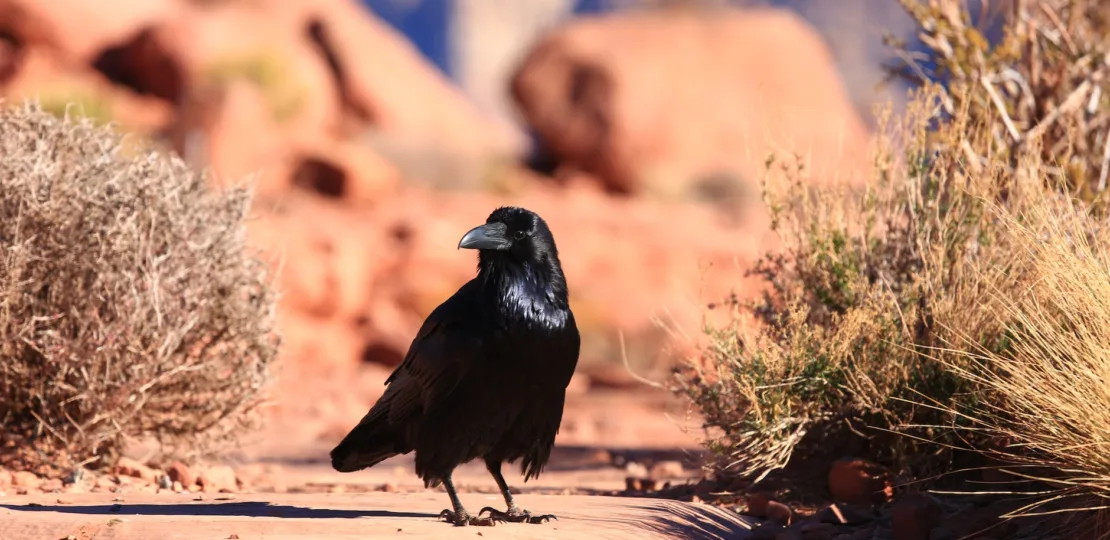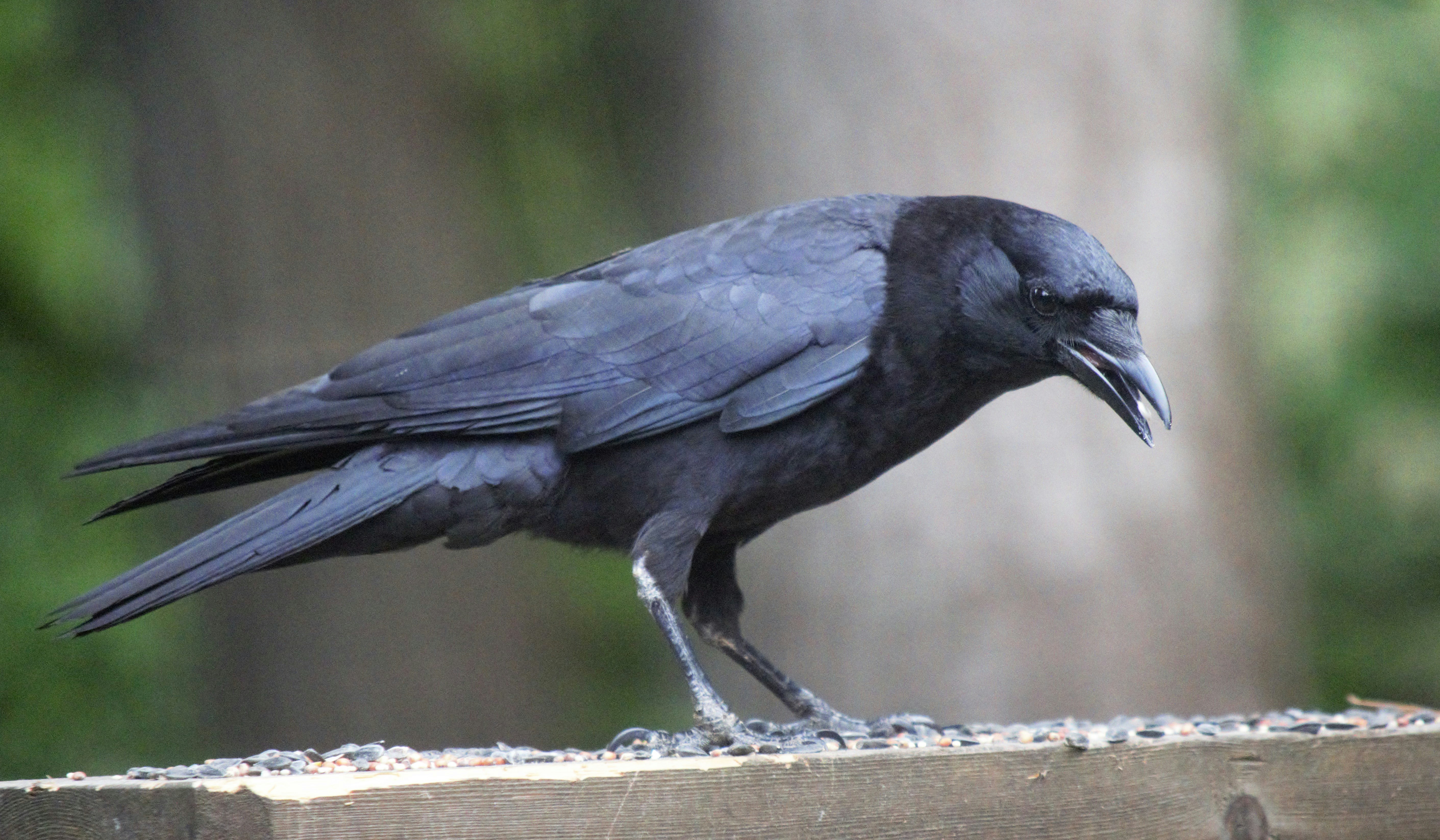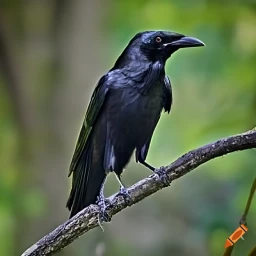Unlocking the Secrets of the Slender-Billed Crow: Corvus Enca in Malaysia, Borneo, and Indonesia
December 30, 2023 | by BlackCrow.com

The Fascinating Slender-Billed Crow
The slender-billed crow, scientifically known as Corvus enca, is a captivating bird found in Malaysia, Borneo, and Indonesia. Let’s dive into the intriguing world of this unique species.
Introducing the Slender-Billed Crow
The slender-billed crow is a member of the crow family, known for its distinctive appearance and behavior. With its slender bill and glossy black plumage, this crow stands out among its avian counterparts. It is an intelligent and adaptable bird that has captured the attention of researchers and bird enthusiasts alike.
The slender-billed crow is known for its vocalizations, which include a range of calls and complex vocalizations. These vocalizations play a vital role in communication within the crow’s social groups and contribute to their intriguing behaviors.
Habitat and Distribution
The slender-billed crow is primarily found in the tropical regions of Malaysia, Borneo, and Indonesia. It inhabits various habitats, including lowland forests, coastal areas, and even urban environments. These crows are well-adapted to their surroundings and can thrive in diverse ecosystems.
In Malaysia, slender-billed crows can be spotted in states such as Peninsular Malaysia, Sabah, and Sarawak. Borneo, the world’s third-largest island, provides a significant habitat for these birds, with populations spread across Brunei, Indonesia (Kalimantan), and Malaysia (Sabah and Sarawak).
In Indonesia, the slender-billed crow can be found in various regions, including Sumatra, Java, and Bali. These birds have also been observed in parts of Kalimantan and Sulawesi.
Understanding the habitat and distribution of the slender-billed crow is crucial for conservation efforts and ensuring the long-term survival of this remarkable species. To learn more about the conservation initiatives and research surrounding the slender-billed crow, explore our article on efforts to protect the slender-billed crow.
The slender-billed crow is just one of many fascinating crow species found around the world. If you’re interested in learning about other crow species, check out our articles on pied crow, little crow, and cape crow. Stay tuned for more captivating information about these intelligent and charismatic birds!
Physical Characteristics of the Slender-Billed Crow
The slender-billed crow, scientifically known as Corvus enca, is a fascinating bird found in Malaysia, Borneo, and Indonesia. Let’s explore its size, appearance, and unique features.
Size and Appearance
The slender-billed crow is a medium-sized bird, measuring approximately 40-43 centimeters (15.7-16.9 inches) in length. It has a wingspan of about 75-85 centimeters (29.5-33.5 inches). The males and females of this species have similar sizes and appearances.
This crow has a predominantly black plumage, with a glossy sheen that adds to its beauty. Its feathers are sleek and well-maintained, giving it a refined appearance. The slender-billed crow has a distinctively slender bill, which sets it apart from other crow species. The bill is long and slightly curved, allowing it to efficiently forage for food.
Unique Features
The slender-billed crow possesses several unique features that make it a remarkable bird to observe. One notable feature is its bright blue eyes, which provide a striking contrast against the black plumage. These captivating eyes are not only aesthetically pleasing but also serve a functional purpose, aiding in visual communication and enhancing the bird’s overall presence.
Another distinguishing characteristic of the slender-billed crow is its vocalizations. This species has a wide range of calls, including harsh caws and melodic notes. These vocalizations play an essential role in communication within the crow’s social group, allowing for coordination and maintaining social bonds.
In terms of flight, the slender-billed crow displays graceful and agile movements in the air. It often glides smoothly between trees and uses its powerful wings to navigate its forest habitat. Observing the slender-billed crow in flight is a sight to behold, as it showcases its impressive aerial skills.
Understanding the physical characteristics of the slender-billed crow provides valuable insights into the bird’s appearance and abilities. Its sleek black plumage, slender bill, striking blue eyes, and graceful flight make it a captivating species to observe in its natural habitat. To learn more about the behavior and conservation status of the slender-billed crow, continue reading our article.
Behavior and Diet
Understanding the behavior and diet of the slender-billed crow (Corvus enca) provides insights into the fascinating life of this bird species.
Social Behavior
Slender-billed crows are highly social birds that form large flocks. They are often seen in pairs or groups, engaging in various social interactions. These interactions include vocalizations, grooming, and playing. Being part of a flock allows them to establish strong social bonds and provides protection against predators.
Within the flock, slender-billed crows exhibit a hierarchical structure. Dominant individuals hold higher positions and have priority access to resources such as food and nesting sites. This hierarchical structure helps maintain order and reduces aggression within the group.
Feeding Habits
Slender-billed crows have an omnivorous diet, meaning they consume both plant and animal matter. They are opportunistic feeders, adapting their diet based on availability and seasonality. Their diet primarily consists of fruits, seeds, insects, small vertebrates, and carrion.
These crows are known for their intelligence and problem-solving abilities when it comes to obtaining food. They have been observed using tools to extract insects from tree bark and even using cars to crack open nuts. This adaptability and resourcefulness contribute to their survival in diverse habitats.
To ensure a balanced diet, slender-billed crows have a keen sense of taste and can detect bitter substances. This ability helps them avoid consuming potentially harmful or toxic food items.
Understanding the behavior and feeding habits of slender-billed crows contributes to our knowledge of their ecological role and helps in their conservation. It is important to protect their natural habitats and ensure the availability of diverse food sources for these remarkable birds.
Conservation Status and Threats
The slender-billed crow (Corvus enca) is a unique bird species found in Malaysia, Borneo, and Indonesia. Understanding the conservation status and threats faced by these birds is crucial for their protection and preservation.
Current Conservation Status
The slender-billed crow is currently listed as Vulnerable on the International Union for Conservation of Nature (IUCN) Red List. This designation reflects the species’ susceptibility to population decline due to various factors, including habitat loss and degradation.
Conservation efforts are underway to monitor and protect the slender-billed crow population. However, due to limited resources and the challenges of studying these elusive birds, more research is needed to fully understand their population dynamics and conservation needs.
Threats to the Slender-Billed Crow
Several threats contribute to the decline of the slender-billed crow population. These threats include:
-
Habitat Loss: The conversion of natural forests into agricultural land, logging activities, and urbanization have significantly reduced the suitable habitat available for slender-billed crows. This loss of habitat limits their nesting sites and foraging areas, putting additional pressure on their survival.
-
Fragmentation: The remaining forested areas where slender-billed crows reside are often fragmented, isolating populations and hindering gene flow. Fragmentation can lead to reduced genetic diversity and increased vulnerability to environmental changes and diseases.
-
Hunting and Trapping: Despite legal protection, slender-billed crows may still face hunting and trapping pressure. This can be due to cultural practices, illegal wildlife trade, or conflicts with agriculture.
-
Climate Change: Climate change introduces additional challenges for the slender-billed crow. Altered rainfall patterns, temperature fluctuations, and habitat shifts can affect their food availability and nesting success.
Efforts to protect the slender-billed crow focus on addressing these threats. Conservation initiatives are aimed at creating and maintaining protected areas, raising awareness about the importance of these birds, and implementing sustainable land-use practices to mitigate habitat loss.
Research and monitoring play a crucial role in understanding the behavior, ecology, and population trends of the slender-billed crow. By gathering data on their habits, movements, and habitat requirements, conservationists can develop targeted strategies for their protection.
The slender-billed crow is a unique and valuable species that requires our attention and conservation efforts. By addressing the threats they face and implementing effective conservation measures, we can ensure the long-term survival of this fascinating bird.
Interesting Facts about the Slender-Billed Crow
The slender-billed crow, scientifically known as Corvus enca, is a remarkable bird with several interesting facts worth exploring. Let’s dive into the cultural significance surrounding this bird and some of its notable behaviors.
Cultural Significance
The slender-billed crow holds cultural significance in the regions where it is found, namely Malaysia, Borneo, and Indonesia. In these areas, the bird often features in local folklore, traditional stories, and myths. It is considered a symbol of intelligence, adaptability, and resourcefulness.
Local communities have incorporated the slender-billed crow into their art, crafts, and traditional ceremonies, further highlighting its cultural importance. Its striking appearance and intriguing behavior have captured the imagination of people throughout generations.
Notable Behaviors
The slender-billed crow exhibits a range of interesting behaviors that make it a fascinating bird to observe. Here are a few notable behaviors of this species:
-
Tool Use: Slender-billed crows are known for their exceptional tool-using abilities. They have been observed using sticks, twigs, and even modified plant stems to extract insects from tree bark. This behavior showcases their problem-solving skills and resourcefulness.
-
Social Structure: Slender-billed crows are highly social birds and form cohesive groups called flocks. These flocks consist of family members and can include up to several dozen individuals. They engage in cooperative feeding, roosting, and even defend their territory as a group.
-
Vocalizations: The slender-billed crow has a diverse repertoire of vocalizations. Their calls range from loud and raucous caws to softer, more melodious notes. These vocalizations serve various purposes, including communication within the flock, warning of predators, and maintaining social bonds.
-
Nest Building: Slender-billed crows construct large, sturdy nests using a combination of twigs, branches, and other materials. They often build their nests high up in tall trees, providing protection from ground predators. These nests are meticulously crafted and can be used for multiple breeding seasons.
The cultural significance and intriguing behaviors of the slender-billed crow add to its allure and make it a captivating subject of study. Understanding these aspects not only deepens our appreciation for this bird but also helps in implementing effective conservation measures to protect its population.
Efforts to Protect the Slender-Billed Crow
Conservation initiatives play a crucial role in safeguarding the population of the slender-billed crow. Efforts are focused on promoting habitat conservation, raising awareness, and conducting research and monitoring to better understand and protect this unique species. Here, we will explore the conservation initiatives and research and monitoring efforts dedicated to the slender-billed crow.
Conservation Initiatives
Various organizations and conservation groups are actively involved in protecting the slender-billed crow. These initiatives aim to conserve the bird’s natural habitat, mitigate threats, and promote population recovery. Some key conservation initiatives include:
-
Habitat Protection: Protecting the slender-billed crow’s habitat is essential for its survival. Conservation organizations work closely with local communities and governments to establish protected areas, nature reserves, and wildlife corridors that ensure the preservation of suitable habitats for the crow.
-
Community Engagement: Engaging local communities in conservation efforts is crucial for the long-term success of protecting the slender-billed crow. Conservation organizations collaborate with communities to raise awareness, provide education on the importance of biodiversity, and promote sustainable practices that benefit both the environment and the local population.
-
Restoration Programs: Restoring degraded habitats can help create suitable conditions for the slender-billed crow to thrive. Conservation initiatives focus on reforestation, habitat restoration projects, and the removal of invasive species that may negatively impact the crow’s habitat.
-
Collaborative Research: Collaborative research efforts involving scientists, conservationists, and local communities contribute to a better understanding of the slender-billed crow’s ecology, behavior, and population dynamics. This knowledge serves as a foundation for effective conservation strategies.
Research and Monitoring
Research and monitoring efforts play a crucial role in assessing the status of the slender-billed crow population and identifying conservation priorities. Key research and monitoring activities include:
-
Population Surveys: Regular population surveys are conducted to estimate the population size, monitor trends, and assess the distribution of the slender-billed crow. These surveys help determine the effectiveness of conservation efforts and identify areas that require further attention.
-
Behavioral Studies: Studying the behavior of the slender-billed crow provides valuable insights into its feeding habits, social interactions, and breeding patterns. Researchers use techniques such as field observations, camera trapping, and radio telemetry to gather data and analyze the behavior of these birds.
-
Habitat Assessments: Assessing the quality and availability of suitable habitat is essential for understanding the ecological requirements of the slender-billed crow. Researchers conduct habitat assessments to identify critical habitat features, assess habitat connectivity, and evaluate the impact of habitat loss and degradation.
-
Threat Assessment: Identifying and understanding the threats faced by the slender-billed crow is crucial for conservation planning. Research efforts focus on assessing the impact of habitat loss, fragmentation, climate change, and potential human-related threats such as hunting or disturbance.
Through conservation initiatives and ongoing research and monitoring, dedicated individuals and organizations are working tirelessly to protect and conserve the slender-billed crow. These efforts are vital for ensuring the long-term survival of this remarkable bird species and preserving its unique place in the ecosystems of Malaysia, Borneo, and Indonesia.
RELATED POSTS
View all


